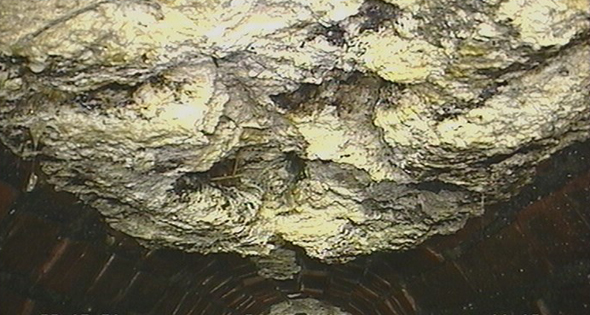The Fatberg
The community of Kingston is in southwest London, next to the River Thames. It’s a relatively well-off area, one which typically doesn’t have major, unexplained infrastructure issues. Surely there are occasional power outages or the Internet stops working, and there are certainly traffic jams and the like. But the toilets? They always work, and if they don’t, it’s a problem with your building’s plumbing. Kingston isn’t the type of place which has a system-wide failure when it comes to flushing.
Except for that one time in 2013 when a fatberg got in the way.
(A what? We’ll get there.)
When you run your sinks or showers or, yes, flush your toilet, the wastewater goes somewhere — it doesn’t just disappear, not even if you’re Harry Potter. In most developed areas, it goes into the sewer system and, from there, into water sewage treatment plants. Keeping the sewers relatively free from obstruction is important because if they get stopped up, the wastewater has nowhere to go, so it either stays in your house or, worse, spills out of the sewer system and into everywhere and everything. That’d be gross and, therefore, best avoided.
So we need to make sure that things are disposed of in the proper manner. Many things which, in theory, can be flushed actually can’t be flushed, as they don’t break down readily in water. Toilet paper is fine — it’s designed to dissolve — but other things simply aren’t. Tops on that list? Sanitary napkins, baby wipes, and food fats. (Check out the “From the Archives” link below for more on that last one.) When those three things go down the drain, they end up in the sewer in roughly the same condition as they were in when they left your home. Gather enough of that stuff together in one place and you’ll end up with something that looks like this:

And that is a fatberg.
It’s an iceberg of food fat, basically — and of sanitary napkins and baby wipes. And it just kind of sits in the sewer, gathering mass and volume as more fat and wipes make their way down the drain. Eventually, it clogs up a sewer like cholesterol does to our arteries.
That particular fatberg (the one pictured, that is) was the cause of the Kingston toilet problems. That’s because it was absolutely enormous — it weighed 15 metric tons (that’s 15,000 kg or about 33,000 pounds) and reduced the blocked sewer to five percent of its typical capacity, according to the Thames Water company. National Geographic said that the fatberg was “the size of a school bus” and the BBC reported that removing the ball of vile took three weeks — and that doesn’t include the subsequent repair work required to fix the sewer system. But it could have been worse; as The Verge notes, officials were concerned that “raw sewage could have started spurting out of manholes across the whole of Kingston” had the problem not been caught in time.
And there was a silver lining, too: the fatberg wasn’t just hauled off to a garbage dump. Even before the emergence of this fatberg — widely believed to be London’s largest — the powers-that-be had developed a system for reusing these globs of gross. As CNet reported a few months before the discovery of the 15 metric ton iceberg of awful, local power stations had already started converting similar fat-rich obstructions into usable energy. One power provider, per the Guardian, believed power reclaimed by the area’s fatbergs (collectively) would provide enough energy to power nearly 40,000 London homes each year. The massive fatberg above met the same fate, becoming electricity used by some of the residents whose toilets it previously stopped up (and others).
Bonus Fact: In 2012, parts of Zimbabwe were struck by severe droughts. As part of the water conservation efforts, authorities in the country’s second largest city, Bulawayo, effectively shut down the water system, which, in part, meant that toilets wouldn’t work and sewers ran dry. This led to a build up of waste which, when the water came back, started to collect in the sewer system, creating blockages. To clear the blockages, authorities came up with a novel plan: “synchronized flushing.” Each of the one million residents of Bulawayo were asked to flush at the same time, in hopes that the coordinated rush of water would clear out the aging sewer system. And apparently, it worked.
From the Archives: Brown Friday: Why the day after Thanksgiving is a great day to be a plumber.
Related: “Sewers for growing America: How to plan, design, finance, and build modern sewer systems.” No one is going to buy this book for two reasons (a) it’s from 1966 and hopefully outdated by now and (b) it costs over $500. Yet it kind of looks interesting.
